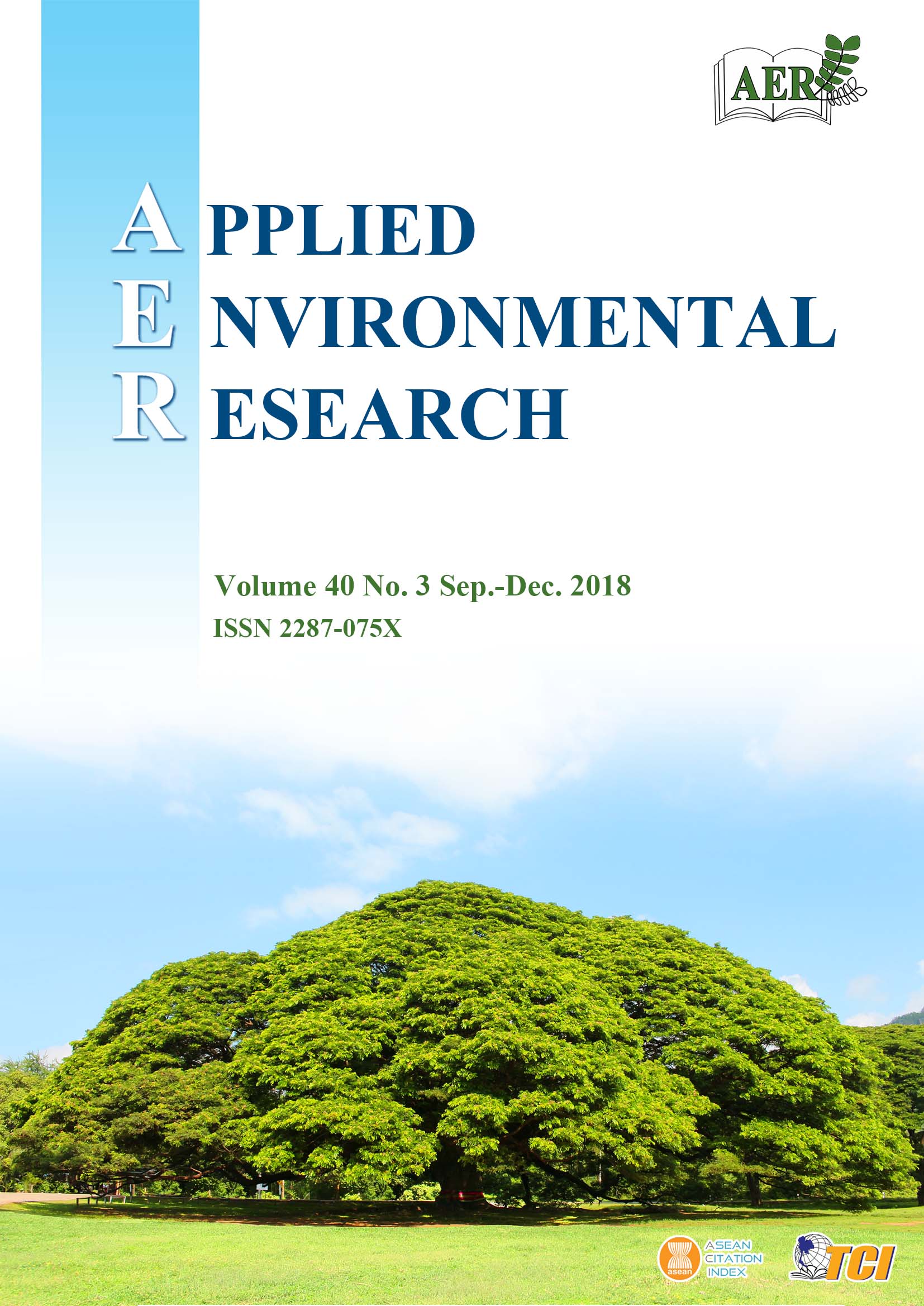Seasonal and Annual Trends of Rainfall and Streamflow in the Mae Klong Basin, Thailand
Main Article Content
Abstract
This study examined seasonal and annual trends of rainfall and streamflow data in the Mae Klong Basin, Thailand. Monthly data of eight key rainfall stations and ten streamflow stations were analyzed to detect trends using the non-parametric Mann-Kendall test, whilst the magni-tude of the trends was determined by Sen’s slope method for the period 2000-2015. For 75 % of the analyzed stations, rainfall was found to increase in the wet season and decrease in the dry season. Station 130013 situated in the lower region showed a statistically significant increasing trend with a trend slope of 16.02 mm a-1 in the wet season, while station 130042- also located in the lower region of the basin- showed a statistically significant decreasing trend, with a trend slope of 23.60 mm a-1 in the dry season. On an annual basis, 63 % of the analyzed stations showed increasing rainfall trends, particularly in the central and lower regions of the Mae Klong Basin; however, rainfall trends in the upper region were found to be decreasing, which reflected water contributions to two main reservoirs in the upper part. The trends of naturalized inflow of Srinagarind and Vajiralongkorn Reservoirs were found to be decreasing on both seasonal and annual bases, while two naturalized streamflow stations located in Lam Taphoen and Lampachi sub-basins in the central and lower regions, respectively, showed increasing trends in both dry and wet seasons. The trends of regulated streamflow stations downstream of 4 main dams which were a result of reservoir operation were found to mostly decrease on an annual scale. Results of this study can help water resources managers enhance accuracy of assessment and effective planning of water resources management in the basin.
Article Details

This work is licensed under a Creative Commons Attribution-NonCommercial 4.0 International License.
Published articles are under the copyright of the Applied Environmental Research effective when the article is accepted for publication thus granting Applied Environmental Research all rights for the work so that both parties may be protected from the consequences of unauthorized use. Partially or totally publication of an article elsewhere is possible only after the consent from the editors.

